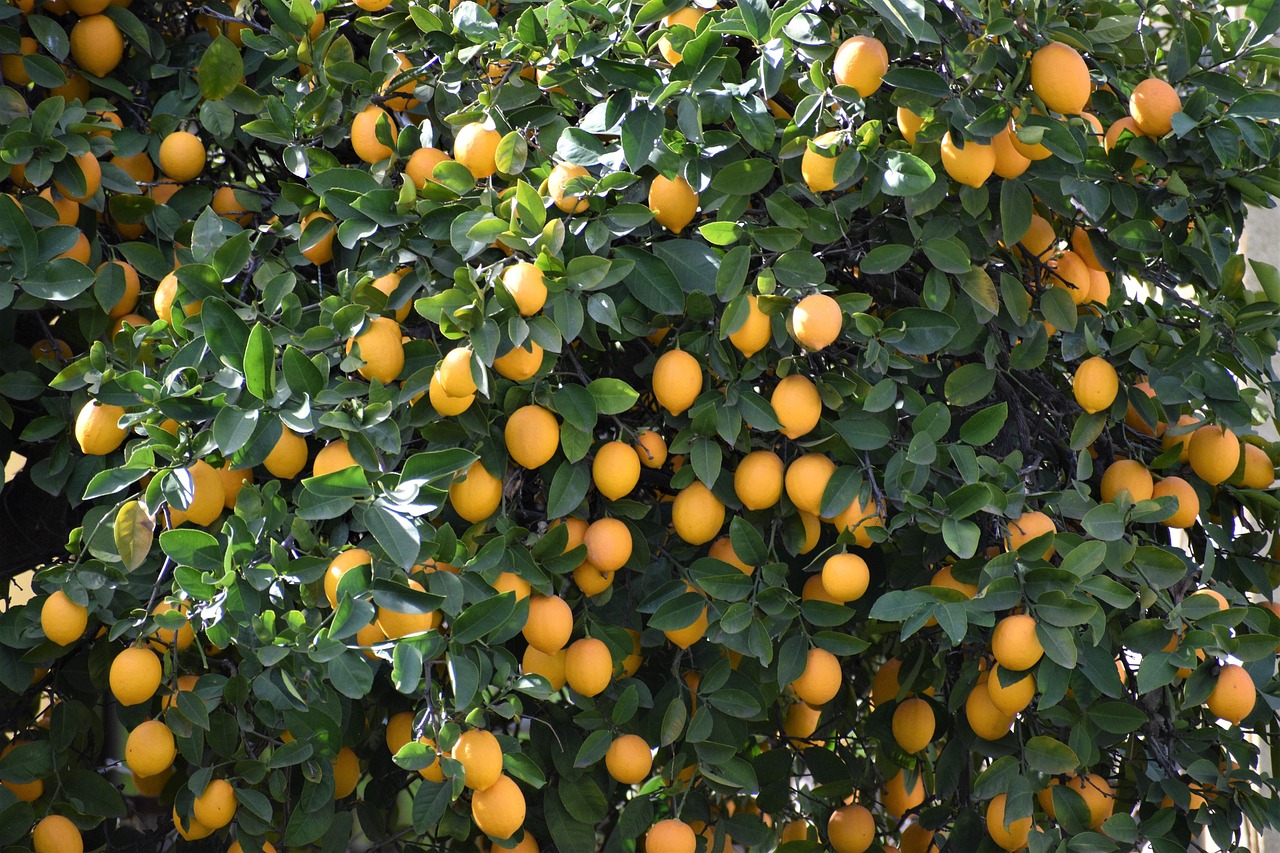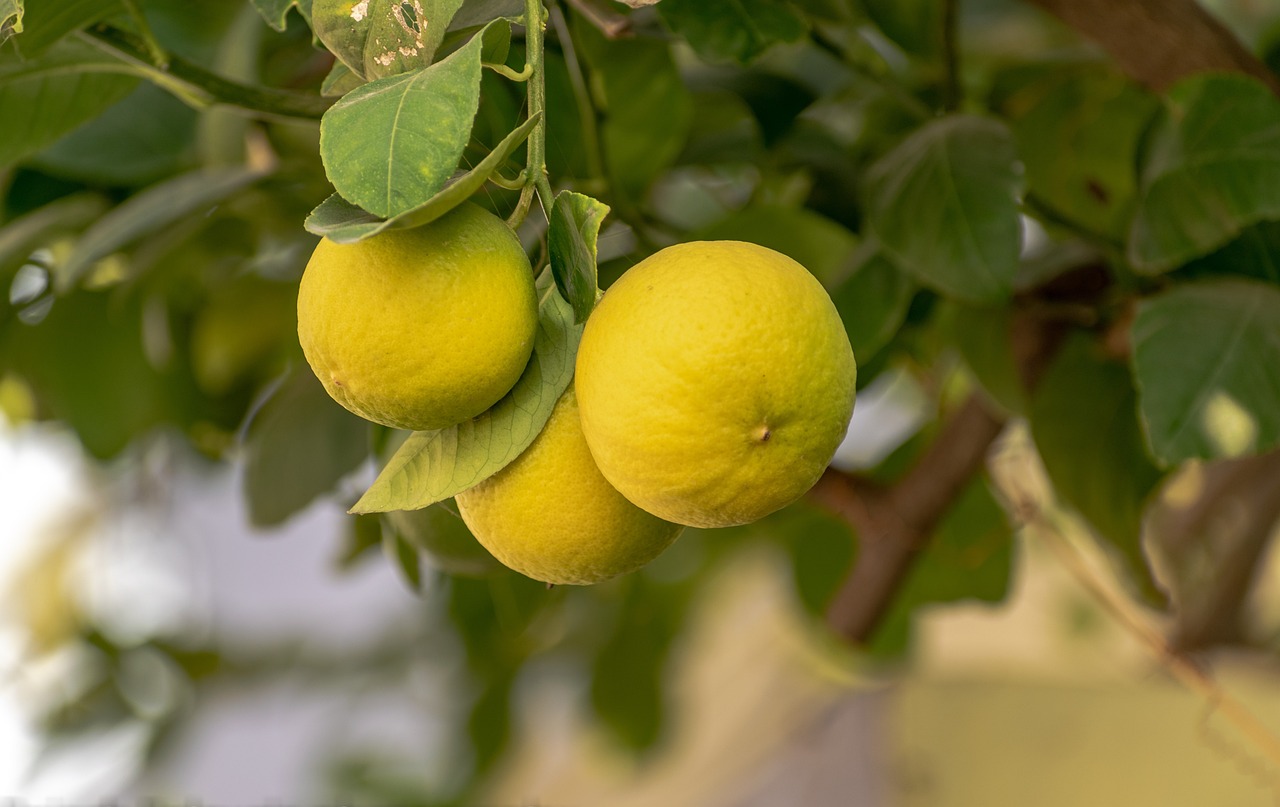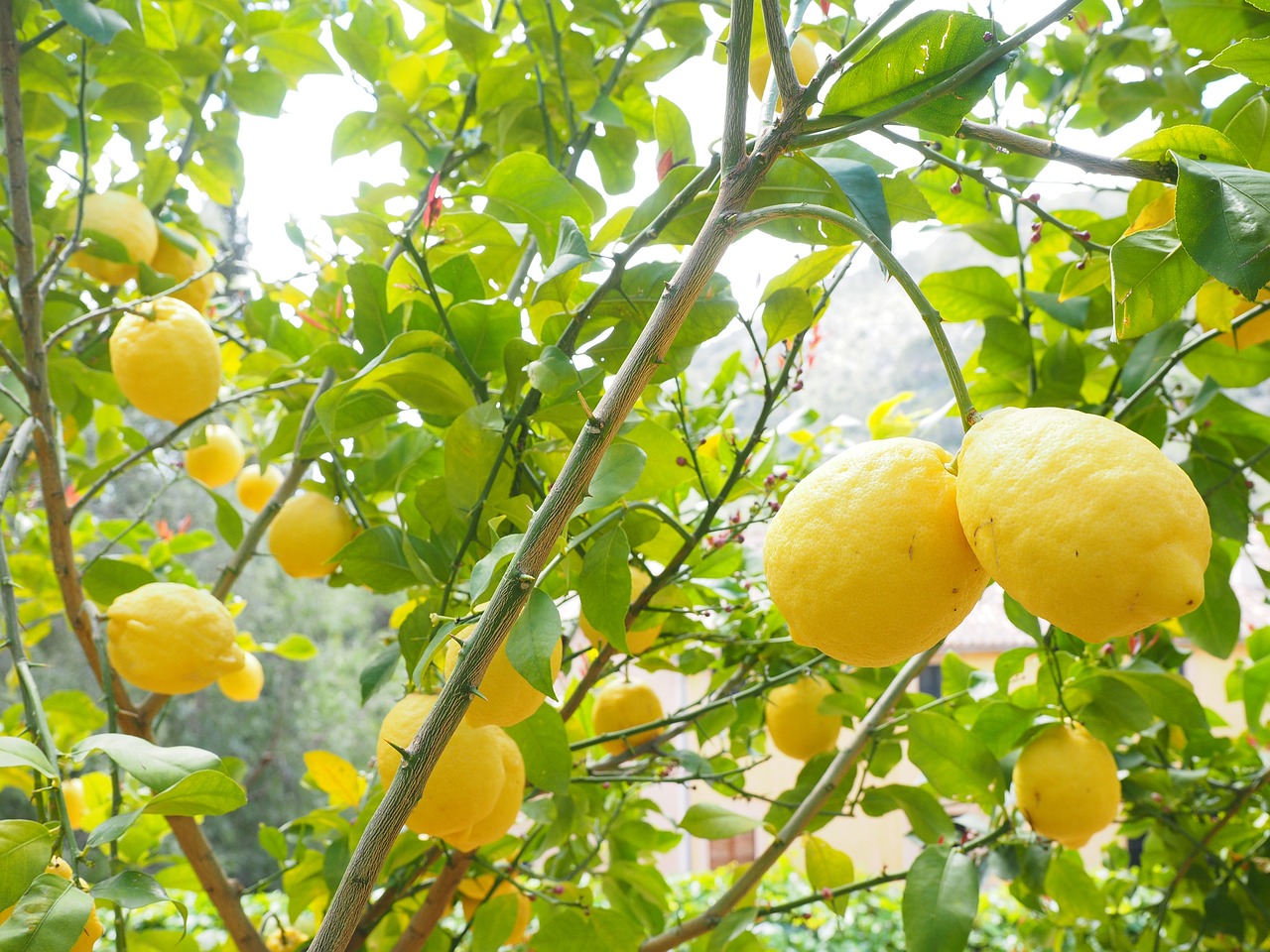Lemon trees typically grow at a rate of 1 to 2 feet per year under optimal conditions. This growth rate can lead to fruit production within 3 to 5 years after planting, depending on the variety and care provided.
Understanding Lemon Tree Growth
Lemon trees, belonging to the citrus family, are popular for their tart fruits and fragrant blossoms. They thrive in warm climates and require specific conditions to flourish. Understanding the growth rate of lemon trees is crucial for those looking to achieve fast citrus yields. Various factors influence their growth, including soil type, climate, watering, and sunlight exposure.

The growth rate of a lemon tree can vary significantly based on these environmental conditions. In ideal settings, lemon trees can reach heights of 10 to 20 feet. However, when grown in containers or smaller spaces, they can be kept at a more manageable size of 3 to 6 feet.
Factors Influencing Growth Rate
Several key factors play a significant role in determining how quickly lemon trees grow. Understanding each of these can help in maximizing yield and enhancing overall health.
- Soil Quality: Well-draining soil rich in organic matter promotes faster growth. A soil pH between 5.5 and 6.5 is ideal.
- Sunlight: Lemon trees require full sun, receiving at least 8 to 10 hours of direct sunlight daily to thrive.
- Watering: Consistent but not excessive watering is essential. Overwatering can lead to root rot, while underwatering can stress the tree.
- Fertilization: Regular feeding with a balanced fertilizer supports healthy growth and fruit production.
- Pest Management: Keeping pests at bay ensures the tree remains healthy and grows efficiently.
Growth Stages of Lemon Trees
Lemon trees go through several growth stages from germination to maturity. Each stage has distinct characteristics that are important for proper care.

| Growth Stage | Description | Time Frame |
|---|---|---|
| Seed Germination | The seed absorbs moisture and begins to sprout. | 2 to 3 weeks |
| Seedling Stage | The young plant grows its first true leaves and develops roots. | 3 to 6 months |
| Mature Growth | The tree reaches its full height and begins flowering. | 3 to 5 years |
| Fruit Production | The tree starts producing lemons. | 4 to 6 years after planting |
Best Practices for Optimizing Growth
To achieve fast citrus yields, gardeners should adopt best practices tailored for lemon tree cultivation. Here are some effective strategies:
- Select the Right Variety: Choose varieties known for faster growth and higher yields, such as Eureka or Lisbon lemons.
- Provide Adequate Space: Ensure enough space for root expansion and air circulation around the tree.
- Regular Pruning: Trim the tree annually to promote better airflow and remove any dead or diseased branches.
- Monitor Climate Conditions: Protect young trees from extreme weather conditions, such as frost or excessive heat.
By implementing these practices, gardeners can enhance the health and productivity of their lemon trees. This not only accelerates growth but also ensures a bountiful harvest for years to come.
Common Varieties of Lemon Trees
When choosing lemon trees for cultivation, selecting the right variety is essential for achieving optimal growth and fruit production. Different lemon tree varieties have unique characteristics, growth rates, and yields. Understanding these differences can help gardeners make informed choices based on their specific needs and conditions.

Eureka Lemons
The Eureka lemon is one of the most popular varieties grown worldwide. It is known for its high yield and juicy, tart fruits. The tree is thorny and grows upright, reaching heights of 10 to 20 feet. Here are some key features of the Eureka lemon:
- Growth Rate: Moderate to fast, typically reaching maturity in 3 to 5 years.
- Fruit Characteristics: Produces medium to large-sized lemons with a bright yellow color.
- Climate Preferences: Thrives in warm climates but can tolerate some cooler temperatures.
Lisbon Lemons
Lisbon lemons are another popular variety that is often confused with Eureka lemons due to their similar appearance and taste. Lisbon trees are vigorous growers and are prized for their excellent juice quality. Here’s what to know about Lisbon lemons:
- Growth Rate: Fast-growing, often reaching maturity in 3 to 4 years.
- Fruit Characteristics: Large, oval-shaped lemons with a smooth skin and high acidity.
- Climate Preferences: Prefers warm climates but can adapt to various soil types.
Meyer Lemons
Meyer lemons are a hybrid between a lemon and a mandarin, known for their sweeter flavor and thinner skin. These trees are smaller than Eureka and Lisbon varieties, making them suitable for container gardening. Important aspects of Meyer lemons include:

- Growth Rate: Slow to moderate; takes about 3 to 4 years to produce fruit.
- Fruit Characteristics: Smaller, rounder lemons with a deep yellow-orange hue and less acidity.
- Climate Preferences: Best suited for warmer climates but can be grown indoors in colder regions.
Cultivation Techniques for Faster Growth
In addition to selecting the right variety, employing effective cultivation techniques is vital for promoting faster growth in lemon trees. Here are some practices that can enhance growth rates:
Soil Preparation
Preparing the soil properly before planting is crucial. Lemon trees prefer well-draining soil rich in organic matter. Here are steps for preparing the soil:
- Testing Soil pH: Aim for a pH level between 5.5 and 6.5.
- Tilling the Soil: Loosen the soil to improve aeration and drainage.
- Adding Organic Matter: Incorporate compost or aged manure to enrich the soil.
Irrigation Practices
Watering is essential for lemon tree growth. However, proper irrigation techniques must be used to avoid water stress or root rot. Consider the following tips:
- Deep Watering: Water deeply but infrequently to encourage deep root growth.
- Drip Irrigation: Implementing a drip irrigation system can provide consistent moisture without waterlogging.
- Monitoring Soil Moisture: Use a moisture meter to determine when to water based on soil conditions.
Pest and Disease Management
Pests and diseases can significantly impact the growth rate and yield of lemon trees. Regular monitoring and early intervention are key to managing these issues effectively.
Common Pests
Lemon trees can attract various pests that may harm their growth. Some common pests include:
- Aphids: Small insects that suck sap from leaves, causing yellowing and stunted growth.
- Citrus Leaf Miners: Larvae that tunnel through leaves, leading to damage and reduced photosynthesis.
- Spider Mites: Tiny pests that create webs and can cause leaves to become speckled and drop prematurely.
Disease Prevention
Diseases such as root rot and powdery mildew can hinder growth. To prevent these issues, consider the following practices:
- Avoid Overwatering: Ensure proper drainage to prevent root diseases.
- Use Disease-Resistant Varieties: Select lemon varieties that are known for their resistance to common diseases.
- Regular Monitoring: Inspect trees frequently for signs of disease or distress.
By implementing these cultivation techniques and managing pests effectively, gardeners can enhance the growth rate of lemon trees and ultimately achieve faster citrus yields.
Fertilization for Optimal Growth
Proper fertilization plays a crucial role in the growth rate and overall health of lemon trees. Nutrient management ensures that trees receive the essential elements needed for vigorous growth and bountiful fruit production. Different types of fertilizers and their application methods can significantly impact the growth rate of lemon trees.
Essential Nutrients for Lemon Trees
Lemon trees require a variety of nutrients for optimal growth. The key nutrients include:
- Nitrogen: Essential for leaf growth and overall vigor. Nitrogen promotes lush green foliage, which is vital for photosynthesis.
- Phosphorus: Important for root development and flowering. It helps strengthen the root system and encourages fruiting.
- Potassium: Supports fruit quality and disease resistance. Potassium helps in the overall health of the plant and enhances flavor in the fruit.
- Calcium: Crucial for cell wall development and preventing blossom end rot in fruits. Calcium also aids in maintaining plant structure.
Types of Fertilizers
There are various types of fertilizers suitable for lemon trees, including organic and synthetic options. Here are some common choices:
- Granular Fertilizers: Slow-release fertilizers that provide a steady supply of nutrients over time. They are easy to apply and ideal for long-term feeding.
- Liquid Fertilizers: Fast-acting solutions that can be mixed with water and applied directly to the soil or as a foliar spray. These are beneficial for quick nutrient uptake.
- Organic Fertilizers: Composed of natural materials, such as compost or manure. They improve soil health and provide nutrients gradually.
Application Techniques
Applying fertilizer correctly is key to maximizing nutrient uptake and promoting healthy growth in lemon trees. Here are effective application techniques:
Timing of Fertilization
The timing of fertilizer application can impact its effectiveness. Consider these guidelines:
- Spring Feeding: Apply fertilizer in early spring as trees begin to show new growth. This helps support vigorous growth during the growing season.
- Mid-Summer Boost: A second application in mid-summer can provide additional nutrients, especially if trees are heavy bearers.
- Avoid Late Feeding: Do not fertilize late in the season to prevent new growth that could be damaged by cold weather.
Application Methods
Different methods can be used to apply fertilizers effectively:
- Broadcasting: Spread granular fertilizers evenly around the tree’s drip line, avoiding direct contact with the trunk.
- Soil Drench: Mix liquid fertilizers with water and pour it around the base of the tree to allow for quick absorption.
- Foliar Spray: Apply liquid fertilizers directly to the leaves for immediate nutrient uptake, especially during periods of rapid growth.
Environmental Factors Impacting Growth Rate
The environment significantly influences the growth rate of lemon trees. Understanding these factors can help gardeners create optimal conditions for their plants.
Temperature Requirements
Lemon trees thrive in warm temperatures. Here are important temperature considerations:
- Optimal Temperature Range: Lemon trees prefer daytime temperatures between 70°F and 85°F (21°C to 29°C).
- Critical Low Temperatures: They are sensitive to frost; temperatures below 30°F (-1°C) can damage or kill young trees.
- Heat Stress: Extremely high temperatures above 100°F (38°C) may cause stress and reduce fruit set.
Humidity Levels
Humidity can also impact lemon tree growth. Here’s how humidity affects them:
- Ideal Humidity Levels: Lemon trees prefer moderate humidity levels around 50% to 70%.
- Drought Stress: Low humidity combined with high temperatures can lead to dehydration and poor fruit quality.
- Mist Systems: In extremely dry areas, misting systems can help maintain humidity levels around the tree.
Pruning for Health and Yield
Regular pruning is essential for maintaining the health of lemon trees and encouraging optimal growth rates. Proper pruning helps improve air circulation, sunlight penetration, and overall tree structure.
When to Prune
The best time to prune lemon trees is during their dormant season, typically in late winter or early spring before new growth begins. This timing minimizes stress on the tree and encourages healthy growth.
Pruning Techniques
Here are some effective pruning techniques for lemon trees:
- Remove Dead or Diseased Branches: Cut back any branches that show signs of disease or damage to maintain tree health.
- Crown Thinning: Thin out crowded branches to improve airflow and reduce disease risk.
- Shaping the Tree: Shape the tree to maintain an open center, allowing sunlight to reach all parts of the tree.
By following these guidelines for fertilization, environmental management, and pruning, gardeners can significantly enhance the growth rate of their lemon trees, leading to healthier plants and more fruitful harvests.
Additional Considerations for Growing Lemon Trees
In addition to the practices discussed, there are further considerations that can impact the growth rate and overall yield of lemon trees. Understanding these aspects can help gardeners optimize their cultivation efforts and achieve a fruitful harvest.
Container Gardening
For those with limited space, growing lemon trees in containers is an excellent option. Container gardening allows for flexibility and mobility, making it easier to manage the trees in varying environmental conditions. Here are some tips for successful container gardening:
- Choose the Right Container: Select a pot that is at least 18-24 inches in diameter. Ensure it has drainage holes to prevent waterlogging.
- Use Quality Potting Mix: A well-draining potting mix enriched with organic matter is crucial for healthy root growth.
- Fertilize Regularly: Container-grown plants may require more frequent fertilization due to limited soil nutrients.
- Watering Needs: Monitor the soil moisture carefully. Container trees may need more frequent watering than those planted in the ground.
Seasonal Care
The care requirements for lemon trees can vary significantly with the seasons. Adjusting care practices based on seasonal changes can improve growth rates:
- Spring: Increase watering and begin fertilization as new growth appears. Prune any dead or damaged branches to encourage healthy growth.
- Summer: Keep an eye on watering needs, especially during hot spells. Monitor for pests and diseases as they tend to be more active during this time.
- Fall: Gradually reduce watering as temperatures cool. Apply a balanced fertilizer to prepare the tree for dormancy.
- Winter: Protect trees from frost. If temperatures drop significantly, consider bringing container trees indoors or covering ground-planted trees.
Understanding the Role of Pollination
Although lemon trees can produce fruit without cross-pollination, having pollinators such as bees in the vicinity can enhance fruit set and yield. Here’s how pollination affects lemon trees:
- Self-Pollination: Many lemon varieties, including Eureka and Lisbon, are self-pollinating, meaning they do not require pollen from another tree to produce fruit.
- Improved Yields: While self-pollination is effective, cross-pollination can lead to larger fruit and higher yields.
- Pest Management for Pollinators: Avoid using harsh pesticides during flowering to protect beneficial insects that aid in pollination.
Final Thoughts
Cultivating lemon trees can be a rewarding endeavor for gardeners looking to enjoy fresh citrus. Understanding the growth rate and the factors that influence it is essential for achieving optimal results. Key practices include selecting suitable varieties, implementing effective fertilization and pruning techniques, managing pests and diseases, and adapting care strategies based on seasonal changes.
By creating an optimal environment and providing consistent care, gardeners can enhance the growth of their lemon trees, leading to healthier plants and abundant fruit yields. Whether growing in a backyard garden or in containers, the joy of harvesting your own lemons is a delightful experience that can elevate culinary dishes and beverages alike.
The journey of growing lemon trees not only enriches your garden but also provides a sense of accomplishment and connection to nature. With patience and dedication, anyone can successfully cultivate these beautiful and productive trees.
